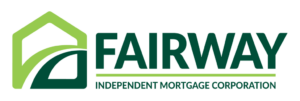Storytime – how Joan used her Reverse Mortgage to pay for a Roth Conversion
Joan, a 65-year-old retiree, has $500,000 in a traditional pre-tax IRA and is looking to switch to after-tax Roth funds. Joan would have to pay $175,000 in income tax on the converted amount. Joan decides to use $175,000 from her reverse mortgage line of credit to pay the income tax on the converted amount. She doesn’t make any voluntary prepayments toward the reverse mortgage loan balance. At 3.5 percent interest annually, in 20 years, her loan balance climbs to $350,000
Now, what could Joan’s $175,000 be worth if not taxed in an investment that yields 7 percent return annually? $350,000 in 10 years? $700,000 in 20 years?
Using the reverse mortgage to pay for the Roth conversion, Joan, at age 85, would have a total investment (assuming a 7 percent return annually) of $2 million, less the $350,000 to repay the reverse mortgage loan balance or a net amount of $1.65 million.
If Joan didn’t go for a Roth Conversion, her total investment (assuming a 7 percent return annually) at age 85 would be $2 million, less $800,000 (40 percent tax), or a net amount of $1.2 million.
If Joan did go for a Roth Conversion but used $175,000 from her investment funds to pay for the conversion (bringing investment at that time down to $325,000), her total investment (assuming a 7 percent return annually) at age 85 would be a net amount of $1.25 million.
Bottom line is that Joan could end up with greater net wealth over time if she goes with a reverse mortgage to pay for the Roth conversion or use investment funds to pay for the conversion.
Back to Basics – What is a Reverse Mortgage?
A Home Equity Conversion Mortgage (HECM, commonly called a reverse mortgage) is a home loan that allows homeowners 62 and older to convert a percentage of their home equity into cash, fixed monthly advances, or a line of credit. The borrower can defer repayment of the loan balance so long as he/she lives in the home and pays the property charges, like taxes and insurance. Now more than ever, reverse mortgages are being used in a financial planning sense, such as to maximize cash flow, reduce taxes, and minimize risk*.
Are disbursements from a reverse mortgage loan taxed as income?
No, reverse mortgage loan proceeds are not taxable income. By drawing a portion of your cash flow needs tax-free, you may be able to keep your Adjusted Gross Income (AGI) low*.
Why is the HECM Line of Credit ideal for tax planning purposes?
It’s liquid home equity – the money can be borrowed, paid back, and borrowed again. The unused portion of the line of credit grows at the same compounding rate as the loan balance, meaning greater capacity to borrow more funds in the future if needed. The line of credit is also secure – it cannot be capped, frozen, or reduced because of market conditions.
Are draws from a reverse mortgage deductible?
It depends on what the loan proceeds are used for. While “home equity indebtedness” is no longer deductible (per the Tax Cuts and Job Act of 2017), “acquisition indebtedness” remains deductible. With a reverse mortgage, so long as the debt is incurred to acquire, build, or sustainably improve a primary residence, it counts as acquisition indebtedness. Use of reverse mortgage proceeds that may qualify for acquisition indebtedness include*:
• Refinancing a traditional mortgage
• Funding major home improvements
• Buying a new home (primary residence)




